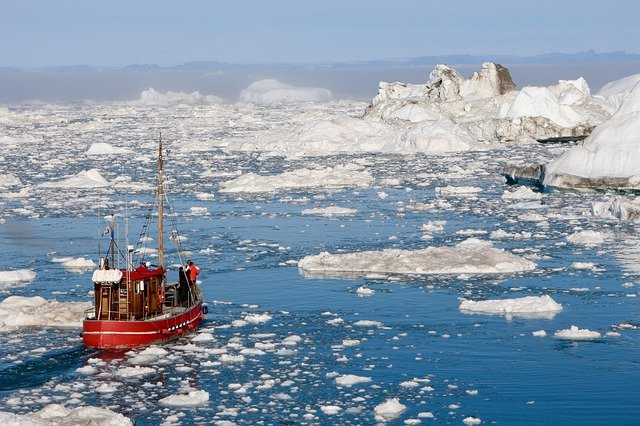The frozen methane deposits in the Arctic Ocean, also known as the "sleeping giants of the carbon cycle", have begun to release following unexpected heatwave and ice melting around the North Pole, said scientists, sending out alarm bells of abrupt climate change across the world that is already battered by the coronavirus pandemic.
As per the researchers, the deposits have begun leaking methane over a large region of the continental slope off the East Siberian coast. Scientists are concerned about the impact of the methane release on earth's environment in the future, as this greenhouse gas has a global warming potential, and the molecule of methane can lead to 80 times more warming than carbon dioxide.
'The Sleeping Giant Is Waking Up

The frozen methane deposits in the Arctic region is an accumulation of hundreds of thousands of years of biomass that has been hidden from the atmosphere. But now, due to global warming, the glacier began to melt, causing a large amount of methane released into the atmosphere which is increasing the temperature.
A 60-member international team found high levels of the potent greenhouse down to a depth of 350 meters in the Laptev Sea near Russia. This new finding has raised concerns among the researchers and they believe a new climate feedback loop may have been triggered that could accelerate the pace of global warming.
The researchers are part of a multi-year International Shelf Study Expedition. According to the scientists, their findings are preliminary. During their next expedition to the North Pole, they hope to analyze the information to predict the quantity of methane release and then publish their findings in a peer-reviewed journal.
Arctic's Greenhouse Gas Deposit
The region has large amounts of frozen methane gas as well as other gases, known as hydrates, in the slope sediments. As per the United States Geological Survey (USGS), if the hydrate becomes destabilized, then there is a huge risk as this is one of the most dangerous scenarios that can trigger abrupt climate change in the future.
At one location on the Laptev Sea slope, scientists found that at a depth of 300 meters, the methane concentrations of up to 1,600 nanomoles per liter —400 times more than predicted concentration when the atmosphere and sea are at balance. The discovery has led to growing concerns among researchers about the acceleration of global warming.

Scientists said that the released methane bubbles were getting dissolved in the water, but the levels of methane on the surface were four to eight times higher than expected. Swedish scientist Örjan Gustafsson, of Stockholm University, told the Guardian that at this time, "there is unlikely to be any major impact on global warming, but the point is that this process has now been triggered. This East Siberian slope methane hydrate system has been perturbed and the process will be ongoing."
Igor Semiletov, of the Russian Academy of Sciences, who is the chief scientist of the research, said that the release observed this time is much larger than anything that has been noticed earlier. "The discovery of actively releasing shelf-slope hydrates is very important and unknown until now. This is a new page. Potentially they can have serious climate consequences, but we need more study before we can confirm that," Semiletov added. According to reports, a few months ago, researchers had found an active methane gas leak for the first time over Antarctica.
However, the scientists have confirmed that methane release has already started across a huge area of the slope which is 600 kilometers offshore. They also noticed clouds of bubbles getting discharged from the methane deposit at six monitoring points spread across the slope area that is 150 kilometer in length.
The team of researchers suspects that the methane release may have been caused by the invasion of warm Atlantic currents into the eastern Arctic and the imbalance in the climate has probably happened due to human activities.
The North Pole is getting warmer almost three times compared to the global average. In the last two years, the temperature in the Arctic has hit all-time high recorded levels. This year Siberia recorded 5° Celsius higher temperature than average from January to June.
Last winter's sea ice melting began earlier, while this time the winter's freeze has not yet started. So, at this time the methane release into the atmosphere appears as a massive threat to the north pole as well as the earth's climate.









